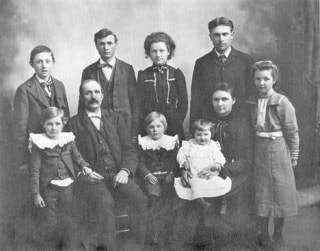As we all enjoy and take for granted our modern modes of transportation throughout our province and beyond, we should take a few pages out of our history books, and realize that these fancy ribbons of pavement were only rugged trails through the wilderness only a century ago. Every highway, every road, every slender pathway winding around lakes, over hills, and through the trees to discover and join villages, towns and cities had to be mapped out and traveled by someone else before us.
They were the hardy trailblazers and pioneers of northern Alberta, and it is the trails that they built that we now follow with ease. In the rolling bush country along the fifth meridian south west of newly established Fort Edmonton there were two large lakes, the biggest by far being Pigeon, with the long narrow Battle Lake just a few miles away. The waters of these lakes would flow together to form the Battle River system, which meandered in many directions through the parkland of North Central Alberta, carving a deeper and deeper valley as it went.
Many early settlements, villages, and districts were established along the banks of the Battle River, including Paradise Valley, Wainwright, Alliance, Camrose, and on and on. Of significance to our very existence is the fact that the surveyors would follow the explorers farther up that valley to the south into the midst of some of the most fertile farmland in the west, eventually to be established as town of the ‘Black Elk’, Ponoka, Alberta.
The pioneer souls who bravely ventured into the early west before the railway extended past Winnipeg or Fort Garry would have to travel over the North Battleford Trail. Freight was also regularly hauled over this route, with the main vehicles being the Red River Cart and the American Democrat. It would take weeks, even months to make the journey, and difficulties included floods, frost and extreme weather conditions. It was likely over this rutted highway that James Aylwin came to the Valley of the Battle River, sixty miles south of Fort Edmonton, then the same summer one of Ponoka’s first residents sent this letter east to the girl he loved.
My dearest lady!
The long journey is over and I am building a small house for us near a river that they call the Battle. You have never seen a more beautiful spot, and I long for the day when you shall join me here. It is much to ask a fair maiden to make the journey, for it is hard, even for a man. You will jolt for days over such roads as you have never seen before, and neither rain nor heat will make any difference.
There is ever-present danger here from the Indians, who they say are restless now, and when you come here you will live in a small shack with a sod roof. The nearest neighbours are more than ten miles away and you may not see another white women for days or months. If, in spite of all, you wish to come to me I have left some money with my father for your journey. You will be able to come by railway to Winnipeg, but from there you will have to come with the freight carts. I suggest you see Mr. McLeod’s agent in Fort Garry. There is a telegraph office now to Edmonton and you can send a message to me there.
With love and hope, I am ever yours.
James.
*Such a letter would have frightened many girls of the day, but not so the future Mrs. Aylwin and many others who would follow in her footsteps. She made the long trip from the east to her fiancé and an Indian Missionary would later marry them. During the first lonely years there were only a few other families along the Battle River, with the Hudson’s Bay Company finally building a small trading post not far away from the tiny Aylwin shack, which later became the district store and first Post Office. Soon after the establishment of Fort Ostell near Ponoka to protect residents against the rebellion, peace would come to the district and the vast area began to develop among a keen atmosphere of hard work, determination, special friendships, and a bright outlook for the future!
The Canadian Pacific Railway would make its way across the Prairies in 1881, making the trip a little easier from north and south, and resulted in the influx of many new settlers from Canada and the United States into this area of new opportunity. Trains full of new pioneers and their worldly belongings would pull into Siding 14 each and every day, and as homesteads were established and families grew and settled into the districts, the Village of Ponoka began to grow around the train station, and the rest is the beginning of the many exciting chapters of our proud history.
